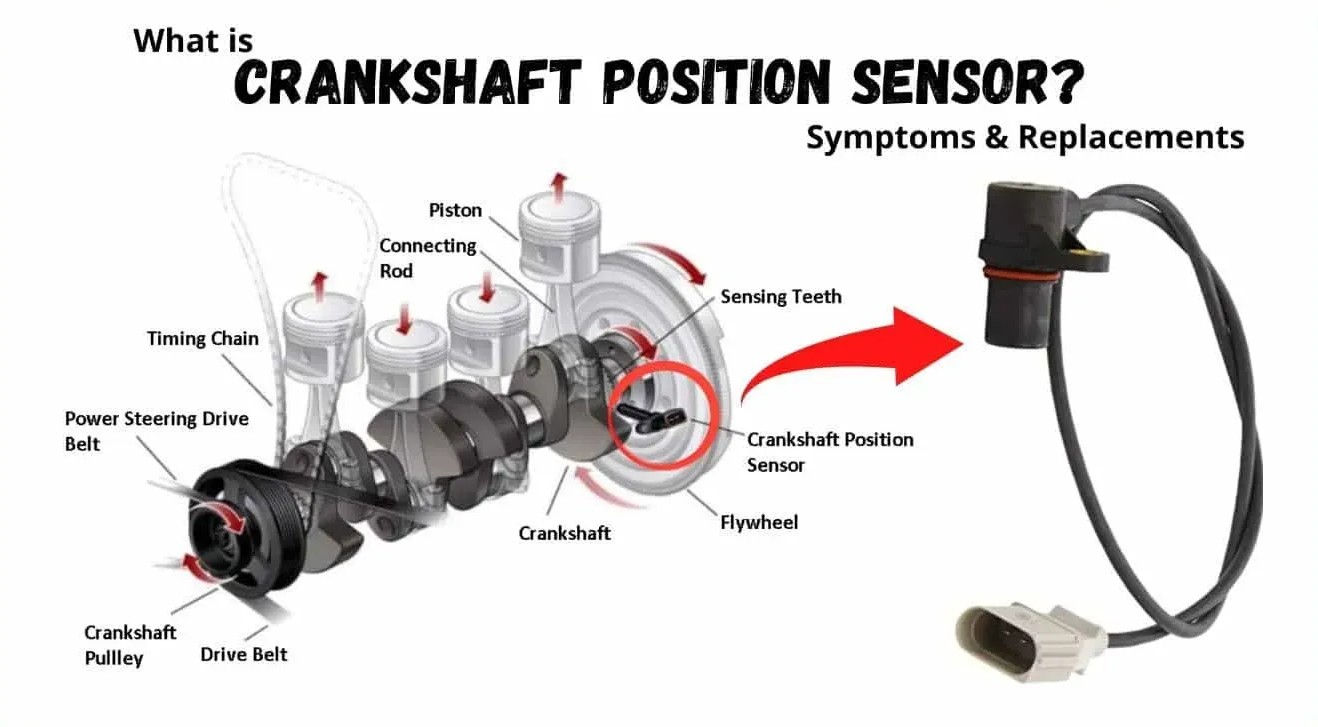
Crankshaft Position Sensor & Replacement: The Heartbeat of Your Engine
Ever had your car suddenly refuse to start, stall at the worst moment, or just run like it’s lost its mojo? The crankshaft position sensor could be the sneaky culprit. This little electric marvel, often called the CKP sensor, is the unsung hero that keeps your engine’s timing locked in. When it’s working, your car fires up smooth and runs like a champ. When it’s not, you’re in for a world of frustration. That’s where crankshaft position sensor replacement comes in real fixes for real drivers who want their engine running right.
What’s a Crankshaft Position Sensor, and Why Does It Matter?
The crankshaft position sensor is the engine’s timekeeper. It tracks the crankshaft’s rotation, sending signals to the ECU so your engine knows exactly when to fire the spark plugs and inject fuel. Miss a beat, and your engine can misfire, run rough, or just give up. Crankshaft position sensor replacement is one of those jobs that keeps your car’s heart beating in perfect time.
Types of Crankshaft Position Sensors: Hall Effect vs Magnetic
Not all crankshaft position sensors are created equal. Hall effect sensors use a digital signal for precise timing, common in modern cars. Magnetic (or variable reluctance) sensors are found in older models, using analog signals. Both do the same job keeping your engine’s timing on point. No matter which type your car uses, we know how to test, diagnose, and handle crankshaft position sensor replacement the right way.
What Happens When a Crankshaft Position Sensor Fails?
When your crankshaft position sensor goes bad, your car can turn into a real headache. Expect hard starts, rough idling, stalling, and a serious drop in power. The check engine light usually pops on often amber or yellow letting you know something’s up. Ignore it, and you risk damaging your engine or getting stranded. That’s why crankshaft position sensor replacement is a must if you want to keep your ride reliable.
How to Diagnose and Fix CKP Crankshaft Position Sensor Issues
Here’s how to spot trouble before it leaves you stranded:
- Check engine light comes on, usually amber or yellow
- Engine misfires, runs rough, or stalls unexpectedly
- Hard starting or no start at all
- Poor fuel economy and sluggish acceleration
- Diagnostic trouble codes for crankshaft or timing issues
- Intermittent power loss or surging
- Visible damage or oil contamination on the sensor
- Scan tool shows erratic or no signal from the sensor
Top 5 Crankshaft Position Sensor Manufacturers
Quality matters when it comes to crankshaft position sensor replacement. Here are five brands we trust to keep your engine in sync:
- Bosch – The gold standard for European and many Japanese cars
- Denso – Trusted for reliability and precision
- Delphi – Solid performance across a wide range of vehicles
- NTK – Known for accuracy and long life
- Hitachi – Top choice for many Asian and European makes
Crankshaft Position CKP Sensor Replacement: What We Actually Do
We don’t just swap parts and hope for the best. Here’s how we handle every job:
- Full diagnostic to confirm if it’s the sensor, wiring, or something else
- Test sensor output and check for trouble codes with scan tools
- Replace with the right sensor for your make and model
- Clear codes and test drive to confirm the fix
- Check for oil leaks or other issues that could affect the sensor
- Honest advice on what was done and why
- Fast turnaround so you’re not left waiting
- Support for all makes, from city cars to performance machines